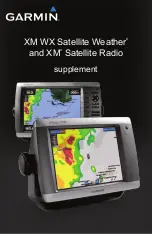
Section 5--General Theory of Operation
5.1
5. GENERAL THEORY OF OPERATION
5.0.
General Theory
The Eagle II moving radar system transmits a radio
frequency on either K-Band, or Ka-Band, in compliance
with the Federal Communications Commission (FCC)
regulations. A portion of the transmitted signal strikes the
surface of the roadway and surrounding terrain and reflects
back to the antenna. The signal is captured by the antenna
and down-converted into Doppler where the Digital Signal
Processing (DSP) translates the signal into the speed of the
patrol vehicle (groundspeed) and is displayed in the
PATROL display.
The Eagle II series has an exclusive feature from Kustom
Signals using the patrol vehicle’s speedometer pulses which
steers the DSP processor to look for the Doppler signal in a
specific speed range. This feature will eliminate the often
annoying anomalies such as shadowing, combined patrol
speeds, splitting speeds, and displaying speeds in the
PATROL window when stopped at a traffic light or sign.
In moving opposite direction mode, a portion of the
transmitted signal strikes an oncoming vehicle (target
vehicle) and returns to the antenna at a higher frequency
because the two objects (patrol vehicle and target vehicle)
are converging. Then the counting unit measures the speed
of convergence, or combined speed, of the patrol vehicle
and target vehicle.
After receiving the Doppler signal, the counting unit
automatically computes the difference between the speed of
the patrol vehicle and the target vehicle. The speed of the
approaching vehicle registers in the TARGET display. If,
for example, a patrol vehicle is traveling 55 MPH and an
approaching vehicle is traveling at 65 MPH, the Eagle II
would process the groundspeed of 55 MPH and the
combined speed of 120 MPH. The DSP would subtract the
















































